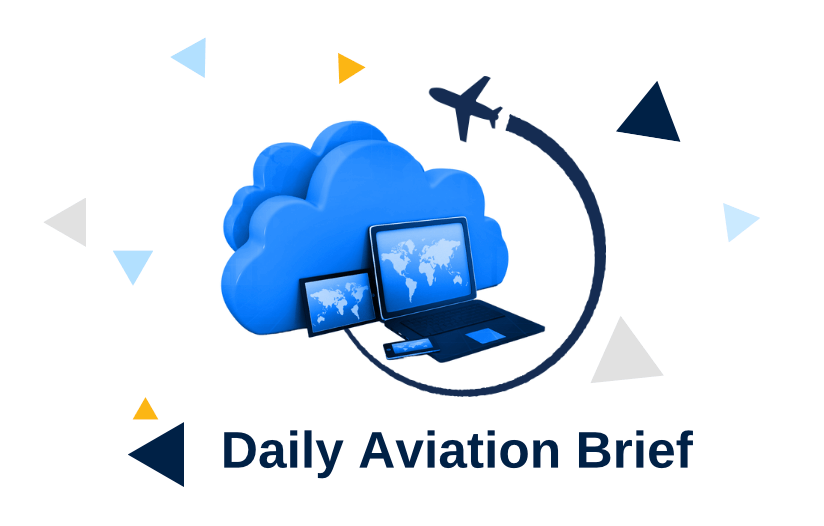




16 Sep 2025
When Leasing Meets Cybersecurity: Protecting Data in a Connected Fleet
“In aviation today, the most valuable cargo onboard isn’t just passengers or freight — it’s data.”
Over the past decade, connectivity has transformed commercial aviation. Aircraft have evolved into digital ecosystems, generating and transmitting terabytes of data during every flight. From predictive maintenance to real-time performance monitoring, this connectivity has redefined operational efficiency and safety. But as fleets become more connected, they also become more vulnerable. And that has profound implications not only for airlines and manufacturers, but also for lessors and the stakeholders who own nearly half the world’s fleet.
Cybersecurity in aviation has often been viewed as a technical issue best left to airlines, OEMs, and regulators. Yet, with the leasing sector’s critical role in asset management, financing, and lifecycle oversight, the conversation has shifted. Cyber risk is now an asset integrity issue, a compliance issue, and increasingly, an investor confidence issue. Lessors cannot afford to remain passive observers.
This blog explores why cybersecurity is becoming a leasing concern, the risks posed by connected fleets, and the proactive role lessors can play in safeguarding aviation’s digital future.
The Connected Fleet: A Double-Edged Sword
Modern aircraft are no longer stand-alone machines. They are embedded with thousands of sensors, linked through satellite communications, and capable of transmitting performance data in real time. According to Airbus, a single A350 can generate up to 2.5 terabytes of data per day.
This connectivity brings clear benefits:
- Predictive maintenance reduces downtime and saves millions in operational costs.
- Fuel optimization tools cut emissions and align airlines with sustainability goals.
- Real-time diagnostics enhance safety and improve flight efficiency.
But connectivity also means exposure. Every new system connected to a network represents a potential entry point for a cyberattack. Just as engines and landing gear require routine checks to remain airworthy, digital systems now require cybersecurity oversight to remain secure.
For lessors, this creates a new dimension of asset risk. A connected aircraft that has been compromised whether through corrupted data, malware intrusion, or unprotected maintenance platforms could lose value, face grounding, or become entangled in regulatory scrutiny.
Why Cyber Risks Are a Leasing Concern
At first glance, cybersecurity may appear to sit outside the lessor’s domain. After all, airlines operate the fleets and are directly responsible for day-to-day data protection. However, the leasing model ties lessors to these risks in ways that are impossible to ignore:
1. Asset Integrity
A cyber incident can damage the operational reliability of an aircraft. If an airline’s maintenance records are compromised, the lessor’s ability to demonstrate compliance at lease return could be jeopardized. The value of the asset depends not just on its physical state, but also on the trustworthiness of its digital records.
2. Regulatory Compliance
Aviation regulators are steadily tightening cybersecurity requirements. EASA, the FAA, and ICAO are introducing frameworks that make cybersecurity as much a safety concern as airworthiness. Lessors need to anticipate how these obligations will cascade down to them, particularly during audits, repossessions, or cross-border transfers.
3. Investor Confidence
Leasing is a capital-intensive business. If investors believe that cyber risk is unmitigated, confidence in lessors’ portfolios could erode. Highlighting strong cybersecurity awareness and controls can enhance transparency and bolster trust with financiers.
4. Reputational Exposure
In a global industry where information spreads quickly, even indirect association with a cyber breach can tarnish a lessor’s reputation. Stakeholders increasingly expect lessors to act as responsible stewards, not just financiers.
The Aviation Cyber Threat Landscape
To appreciate why lessors need to act, it’s worth examining the nature of cyber risks in aviation today.
- Data Breaches & Theft: Operational data such as maintenance logs, leasing contracts, and financial details are lucrative targets for cybercriminals.
- Ransomware Attacks: Airlines and MRO providers have already been hit by ransomware, leading to grounded fleets and disrupted operations. A lessor caught in such an incident could face delayed lease returns or compromised asset records.
- Supply Chain Vulnerabilities: The aviation ecosystem involves OEMs, airlines, MROs, software providers, and regulators. A single weak link can expose the entire chain.
- Insider Threats: Employees or contractors with system access pose unique risks, from negligence to deliberate sabotage.
- Evolving Threat Vectors: As aircraft systems become more software-driven, there is ongoing concern around potential interference with avionics or flight-critical systems, even if heavily protected.
For lessors, the key insight is this: cyber risk is not limited to the operator. It affects the ecosystem that touches the asset across its lifecycle.
The Role of Lessors in Cybersecurity
So, what exactly should lessors do? While they are not expected to become cybersecurity experts overnight, they can take several strategic steps to embed resilience into leasing practices.
1. Integrating Cybersecurity into Lease Agreements
Lease contracts have traditionally focused on physical maintenance obligations. Today, they must evolve to include digital obligations. Examples include:
- Mandating minimum cybersecurity standards for airlines.
- Requiring secure handling of digital maintenance records.
- Defining responsibility for cyber incidents that affect asset integrity.
2. Due Diligence in Airline Partnerships
Just as lessors assess an airline’s financial health, they should also evaluate its cyber maturity. Does the airline follow industry frameworks such as ICAO’s Aviation Cybersecurity Strategy? How does it secure connected systems during maintenance? These assessments can influence risk-weighted leasing decisions.
3. Collaboration with Regulators and Industry Bodies
Lessors should stay ahead of evolving regulatory frameworks. Proactive alignment with EASA, FAA, and ICAO guidance not only ensures compliance but also signals leadership in industry best practices.
4. Investment in Digital Asset Management Tools
Adopting secure digital records management platforms can reduce the risk of data tampering and provide immutable records for lease transitions. Blockchain, for example, is being piloted in aviation to ensure the authenticity of maintenance logs.
5. Educating Internal Teams
Cybersecurity awareness must extend beyond IT departments. Commercial, technical, and legal teams should all understand how cyber risks could affect asset value and leasing contracts.
Case Studies: Lessons from Aviation Cyber Incidents
The Cathay Pacific Data Breach (2018)
A breach exposing data of over 9 million passengers demonstrated how aviation cyber incidents can attract global regulatory scrutiny and heavy fines. Lessors, while not directly affected, took note: data security failures can have cascading effects on customer confidence.
FAA Warnings on Avionics Vulnerabilities
In recent years, the FAA has issued directives highlighting vulnerabilities in certain aircraft communication systems. These incidents remind lessors that cyber risk can threaten airworthiness compliance in an area directly tied to asset value.
MRO Ransomware Attacks
Several maintenance providers have been hit by ransomware, forcing operational shutdowns. For lessors dependent on these MROs for records and inspections, such incidents can delay asset transitions and impact leasing schedules.
These examples highlight a crucial point: even when lessors are not the direct targets, their exposure to collateral risk is very real.
Looking Ahead: Cybersecurity as a Leasing Imperative
The future of aviation leasing will be defined not just by asset type, market cycles, or financing models but also by how effectively lessors navigate digital risks. As connectivity deepens, the following trends will shape the landscape:
- Cyber clauses are becoming standard in lease agreements, much like maintenance reserves or insurance.
- ESG frameworks expand to include cybersecurity resilience, given its links to governance and operational continuity.
- Investor scrutiny of digital risk preparedness during portfolio evaluations.
- Cross-border complexities, as data protection laws differ across jurisdictions where lessors operate.
In short: cybersecurity will soon be as integral to leasing strategy as fuel hedging or residual value forecasting.
Conclusion: From Passive to Proactive
The aviation industry is at a turning point. Fleets are more connected than ever, and the cyber threats facing them are more complex and costly than ever imagined. For lessors, the question is not whether cyber risk belongs in their remit it already does. The question is how quickly they can adapt.
By embedding cybersecurity into contracts, due diligence, and asset management practices, lessors can protect not only the aircraft they own but also the trust of investors, regulators, and operators who depend on them.
Ultimately, in a world where data rivals jet fuel as aviation’s lifeblood, cyber resilience is not just an IT issue, it is a leasing imperative.





